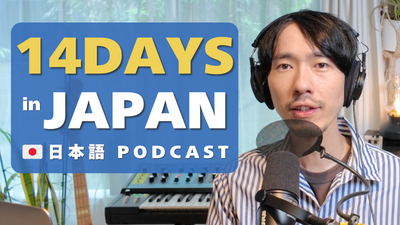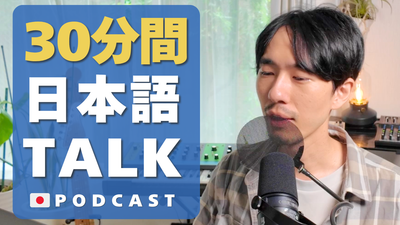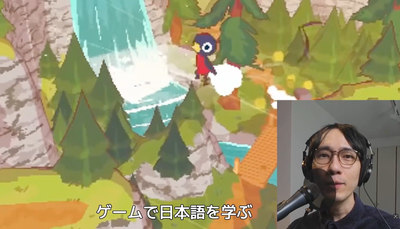Vocabulary
旅(たび) – trip, journey (N4)
- Example 1: 電車で旅をするのが好きです。
- Example 2: この旅は本当に楽しかったです。
電車(でんしゃ) – train (N5)
- Example 1: 新宿から電車で甲府に行きました。
- Example 2: 毎日電車で会社に行きます。
おにぎり – rice ball (N5)
- Example 1: お母さんがおにぎりを作ってくれました。
- Example 2: 駅でおにぎりを買って食べました。
景色(けしき) – scenery, view (N4)
- Example 1: 富士山の景色がとてもきれいでした。
- Example 2: 山の上から町の景色を見ました。
お城(しろ) – castle (N4)
- Example 1: 昔この場所にお城がありました。
- Example 2: 京都にはたくさんのお城があります。
富士山(ふじさん) – Mt. Fuji (N5)
- Example 1: ホテルから富士山が見えました。
- Example 2: いつか富士山に登りたいです。
フルーツ – fruit (N5)
- Example 1: 山梨はフルーツが有名です。
- Example 2: 新鮮なフルーツを食べました。
舞鶴城(まいづるじょう) – Maizuru Castle (proper noun)
- Example 1: 舞鶴城の跡を歩きました。
- Example 2: 舞鶴城から富士山が見えました。
神社(じんじゃ) – shrine (N4)
- Example 1: 武田神社に行きました。
- Example 2: 旅行で有名な神社を訪れました。
湖(みずうみ) – lake (N3)
- Example 1: 最後に湖に行きました。
- Example 2: 静かな湖を散歩しました。
Phrases
Sentence 1
おにぎりって日本人の僕にはいい思い出のある食べ物です。
Rice balls are a food filled with good memories for me as a Japanese person.
Breakdown: おにぎり = rice ball / って = topic (“as for …”) / 日本人 = Japanese person / 僕 = I / には = for (me) / いい = good / 思い出 = memory / のある = that has … / 食べ物 = food
Sentence 2
ここは昔のお城の跡ですね。
This is the site of an old castle.
Breakdown: ここ = here / 昔 = long ago / の = possessive / お城 = castle / の 跡 = remains / ですね = isn’t it? (confirming)
Sentence 3
山梨はフルーツや自然がきれいで、人も優しいところです。
Yamanashi has beautiful fruit and nature, and the people are kind.
Breakdown: 山梨 = Yamanashi / は = topic / フルーツ = fruit / や = and … etc. / 自然 = nature / が = subject / きれい = beautiful / で = and / 人 = people / も = also / 優しい = kind / ところ = place
Summaries in 3 levels
N5–N4(やさしい)
新宿から電車で山梨の甲府に行きます。おにぎりを食べて、お城の跡や町を歩きます。ぶどう(シャインマスカット)をホテルで食べます。夕方は舞鶴城を見て、次の日は武田神社に行きます。ロープウェイで山に上がり、ほうとうを食べます。最後の日は湖(精進湖)を見て、うどんやお茶を楽しみます。自然と食べ物、人のやさしさがよかったです。
English: We take a train from Shinjuku to Kōfu in Yamanashi. We eat rice balls and walk around the castle ruins and town. We enjoy grapes (Shine Muscat) at the hotel. In the evening we see Maizuru Castle, and the next day visit Takeda Shrine. We go up by ropeway and eat hōtō noodles. On the last day we see a lake (Lake Shōjin), enjoy udon and tea. The nature, food, and people’s kindness were great.
N3–N2(ふつう)
新宿から約1時間半で甲府へ向かい、車内でおにぎり弁当を楽しんだ後、駅前や城跡を散策し、荷物はホテルに預けます。季節のシャインマスカットを味わい、夕方は舞鶴城の急な石段や門を見学、夜の町の雰囲気も楽しみました。2日目は武田神社で空気の話題になり、ロープウェイで山頂へ行って景色を眺め、名物ほうとうで元気回復。最終日は喫茶店の朝食後、精進湖など静かな湖をめぐり、地元のうどんやカフェのルイボスティーを満喫し、自然・食・人の温かさを感じる旅でした。
English: After about 90 minutes from Shinjuku to Kōfu, we enjoy an onigiri bento on the train, stroll around the station area and castle ruins, and leave our bags at the hotel. We savor seasonal Shine Muscat grapes, visit Maizuru Castle’s steep steps and gate in the evening, and enjoy the night atmosphere. On day two, at Takeda Shrine we talk about the air quality, then take a ropeway to the summit for views and recharge with the local hōtō. On the final day, after a retro café breakfast, we tour quiet lakes like Lake Shōjin, relish local udon and rooibos tea, and come away warmed by nature, food, and friendly people.
N2–N1(ややむずかしい)
この旅は「移動→観察→食」を軸に、城下町の歴史(舞鶴城の石垣・門・天守台)と日常の楽しみ(量販店、ホテル点検、季節の果物)が軽やかに交差します。武田神社では「甲府は空気が綺麗」という先入観が、盆地ゆえの風通しの悪さというローカル知で更新され、ロープウェイの眺望やほうとう、精進湖の静けさ、下町的な喫茶と地元密着のうどん店まで、観光と生活が地続きに描かれます。結果として、景観・味覚・人情が連動し、「旅先の事実は自分の足で歩いて確かめ、アップデートされる」という気づきに収束します。
English:
This trip revolves around “moving, observing, and eating,” where the history of a castle town (the stone walls, gates, and ruins of Maizuru Castle) blends naturally with small, everyday pleasures—like checking into a hotel, browsing local shops, and tasting seasonal fruit. At Takeda Shrine, the idea that “Kōfu has clean air” is gently corrected by a local insight: the basin traps air, making it less fresh than expected. From the ropeway views and hōtō noodles to the quiet beauty of Lake Shōjin, the retro cafés, and cozy local udon shops, travel and daily life connect seamlessly. In the end, the journey shows how scenery, flavor, and human warmth come together—and how walking through a place yourself lets you truly update what you think you know about it.






Member discussion